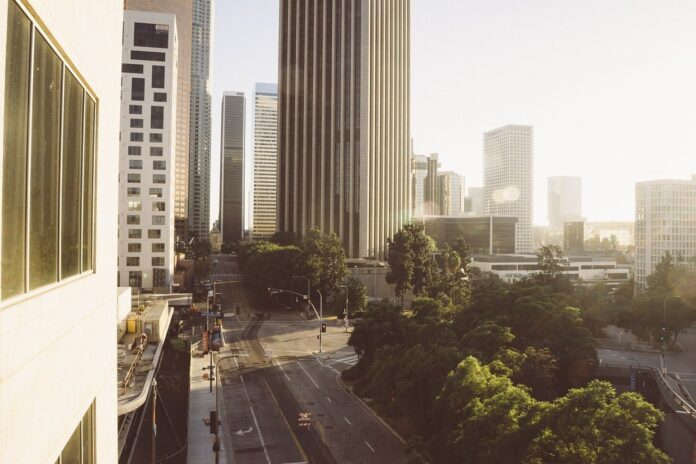Urban areas, often described as concrete jungles, are characterized by their dense infrastructure and bustling activity. Amidst the towering buildings and paved streets, the presence of green spaces can seem like a rare oasis. However, the need for such oases is more than aesthetic; it’s a critical component of urban sustainability and the well-being of city dwellers. As urbanization continues to expand, the integration of nature into these environments becomes imperative. Trees, in particular, play a vital role in transforming gray spaces into green havens, offering a multitude of ecological and social benefits that are essential for a healthy urban life.
The Oxygen Factories: How Trees Improve Urban Air Quality
Trees are often referred to as the lungs of the planet, and for good reason. Through the process of photosynthesis, trees absorb carbon dioxide and release oxygen, actively improving air quality. In urban settings, where emissions from vehicles and industrial activities are high, trees act as natural air filters. They capture pollutants such as nitrogen oxides, ammonia, sulfur dioxide, and particulate matter, mitigating the impact of urban pollution. Studies have shown that a single mature tree can absorb approximately 48 pounds of carbon dioxide per year, underlining the importance of urban forestry in the fight against air pollution and climate change.
A Canopy of Calm: The Psychological Benefits of Urban Trees
Beyond their environmental contributions, trees offer significant psychological benefits to urban residents. The presence of greenery has been linked to reduced stress levels, improved mood, and enhanced mental focus. The calming effect of trees and their aesthetic appeal can create a sense of tranquility in otherwise hectic urban environments. Access to green spaces with trees has also been associated with lower rates of mental health issues, such as depression and anxiety. Furthermore, urban trees provide communal spaces that foster social interaction and community cohesion, contributing to the overall quality of life in cities.
Urban Heat Islands: Cooling Cities with Leafy Streets
The phenomenon of urban heat islands, where cities experience higher temperatures than surrounding rural areas, is exacerbated by the extensive use of concrete and asphalt, which absorb and retain heat. Trees offer a natural solution to this problem by providing shade and releasing water vapor through transpiration, effectively cooling the air. The shade from tree canopies can reduce surface temperatures by up to 36 degrees Fahrenheit, while air temperatures can be lowered by up to 9 degrees Fahrenheit. This not only makes urban areas more comfortable for residents but also reduces the demand for air conditioning, leading to lower energy consumption and decreased greenhouse gas emissions.
Biodiversity Boosters: Trees as Habitats for Urban Wildlife
Urban trees are critical for maintaining biodiversity within cities. They serve as habitats and food sources for a variety of wildlife, including birds, insects, and small mammals. The presence of trees can support complex ecosystems, even in densely populated areas. By planting a diverse range of tree species, cities can create microhabitats that cater to different species, promoting ecological richness. This biodiversity is not only valuable for conservation efforts but also enhances the resilience of urban ecosystems to pests, diseases, and environmental changes.
From Planting to Prosperity: Economic Advantages of Urban Forestry
Investing in urban forestry yields significant economic benefits. Trees increase property values, with studies indicating that homes with street trees can sell for 7% to 15% more than those without. They also attract businesses and tourists, contributing to the local economy. The cost savings from reduced energy consumption for cooling and heating, as well as the lower healthcare costs associated with improved air quality and well-being, further underscore the financial advantages of urban trees. Cities that prioritize green infrastructure can expect not only environmental and social returns but also a boost to their economic prosperity.
The transformation from gray to green is not merely a cosmetic change but a fundamental shift in how we envision and build our urban spaces. Trees are at the heart of this transformation, offering a multitude of benefits that enhance the ecology and quality of life in cities. From improving air quality and providing psychological relief to mitigating heat islands and boosting biodiversity, the impact of trees on urban environments is profound. Moreover, the economic incentives for urban forestry make it a smart investment for the future of our cities. As we continue to grapple with the challenges of urbanization, it is clear that trees will play a pivotal role in creating sustainable, livable, and prosperous urban landscapes for generations to come.
